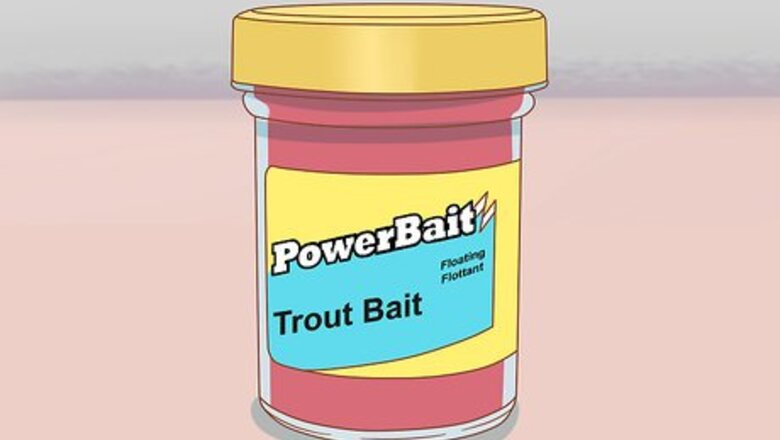
views
Choosing Your Bait

Use trout dough if you intend to fish for wild trout. The dough variety of Powerbait is the most widely used type of Powerbait and is best suited for fishing wild trout. Not only can you mold Powerbait dough into whatever shape you want, but it also reduces the amount of human scent that may get left behind on the bait. This makes it the ideal choice when fishing for fish that aren't used to the smell of humans. The dough variety is also the best type of Powerbait to use if you want it to float. Other varieties, like Powerbait Nuggets, will not float.
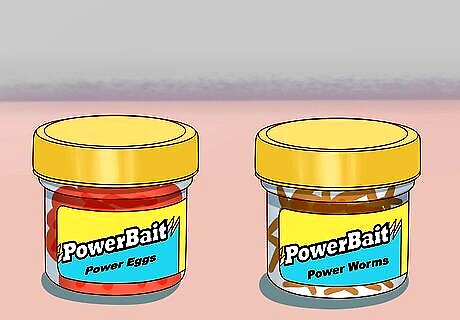
Opt for Powerbait eggs or worms if you don't want to mold the dough. Powerbait eggs and Powerbait worms come pre-molded into shapes that look more natural to fish. This is ideal for those fishers who don't feel completely comfortable molding trout dough into the “right” shape themselves. Using the egg or worm varieties of Powerbait also means that you won't have to handle the bait as much, meaning you won't have the smell of the bait on your hands as much.
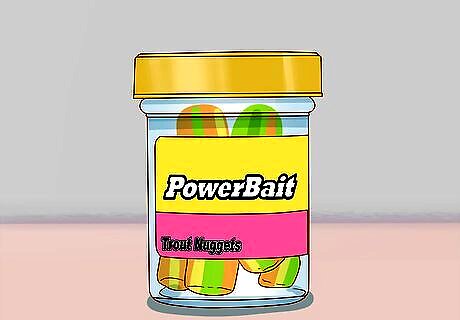
Go with trout nuggets if you're fishing freshly stocked trout. The trout that were raised in hatcheries and that have been reintroduced into the wild tend to bite more on Powerbait nuggets than they do on the dough. Be advised, though, that the nugget variety won't float the way that the dough does. It's not a scientific fact that stocked trout prefer nuggets over dough; this has just been a lot of people's experience.

Experiment with different colors and scents to find what works for you. Powerbait comes in a very wide variety of colors and scents that don't necessarily have any advantages over each other. If you find you have a lot of success with a particular color or scent, keep using it! If not, try out a different variety and see if your luck changes. For best results, keep a few different colors of Powerbait on hand whenever you go fishing. That way, if 1 color doesn't seem to be working, you can switch over to a different color. There are also several glitter varieties that you can try as well. Examples of Colors and Scents Colors: Blue, chartreuse, green, pink, pearl white, and countless others. Scents: Bass, trout, catfish, walleye, and more.
Making and Baiting Your Rig
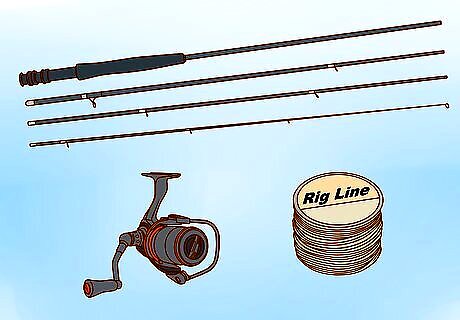
Go with a lightweight rod, reel, and line for your rig. The rod should be a light spinning rod about 6 feet (1.8 m) long and the reel should be a lightweight spinning reel as well. Use a 4 to 6 lb (1.8 to 2.7 kg) fishing line in order to keep the line from weighing down the bait itself.
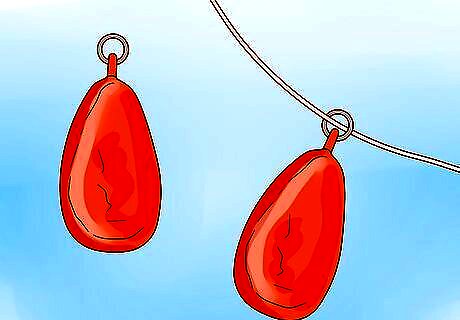
Insert the end of your line into a sliding sinker and pull it through. This sinker will ensure that your rig sinks to the bottom of the water, even with the bait attached to it. Be sure to pull enough of the line through the sinker to give yourself about 6 to 12 inches (15 to 30 cm) of lead line. You can buy a sliding sinker at any fishing supplies store. It's also sometimes referred to as an egg sinker.
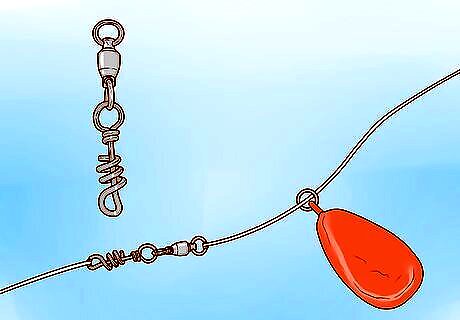
Add a snap swivel to prevent the line from getting tangled. Cut the line about an inch away from the sinker, then use a clinch knot to tie the snap swivel to the end of the line. Then, on the other side of the swivel, use another knot to attach the length of fishing line that you just cut. Now, the 6 to 12 inches (15 to 30 cm) of line on the opposite side of the snap swivel has become your leader. This is the length of line that the bait will eventually be attached to.

Attach a small hook to the end of your leader line. For best results, use a hook around size 10 or 12 for your line. Tie a clinch knot to attach the hook to the end of your leader line. Feel free to use either a single hook or a treble hook.
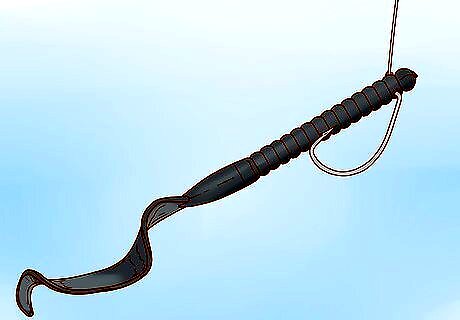
Add enough Powerbait to the hook to completely cover it. Use your index finger to pull out a marble-sized glob of Powerbait from the jar. Mold it into a spherical shape and carefully insert the hook into it until it's completely covered. Be very careful during this process, since the hook may accidentally poke you.
Casting Your Rig

Opt to go fishing for trout in the early morning or at dusk. Trout don't have eyelids, so they won't be as active when the sun is brightly shining. They also tend to be more active when the water is between 34 and 67 °F (1 and 19 °C), so schedule your fishing trips around the time of day when the water will be in this temperature range.
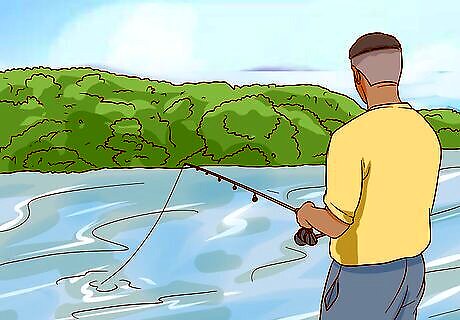
Cast out your rig in calm waters and let it sink to the bottom. Although you're technically able to fish for trout in rivers, the floating bait will be most effective in places where the water is calm. Cast into a lake or pond as far as you can and let the sinker take your bait to the bottom. Keep your reel open until the bait hits the bottom, then close it.
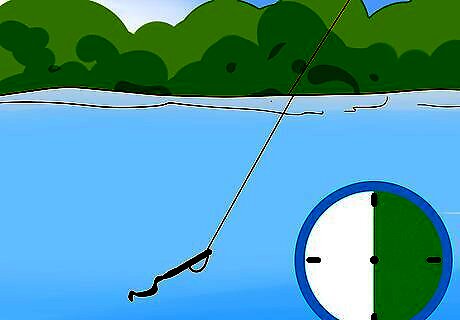
Keep your line out in the water for 20-30 minutes at a time. Instead of reeling it in immediately, leave your rig out so that the smell of the Powerbait can spread and attract fish. Trout normally take a long time before they give in to bait, so be patient! You should reel in your line every 20-30 minutes just to make sure that your bait is still attached. Otherwise, reel it in if you start to feel a pull. Tip For best results, use Powerbait to fish for trout in a lake or other still waters.
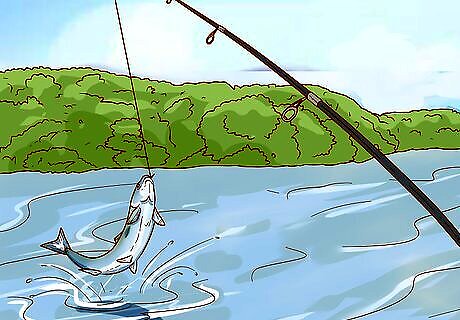
Reel your line in slowly when you feel a trout bite. Remember, your line is relatively lightweight, so be careful not to break it by pulling on the rod too forcefully. Continue to pull gently and upwards on the rod while reeling in your line until you haul up the trout. If you have a net with you, have it ready so you can quickly grab hold of the trout with it once you've reeled it in.











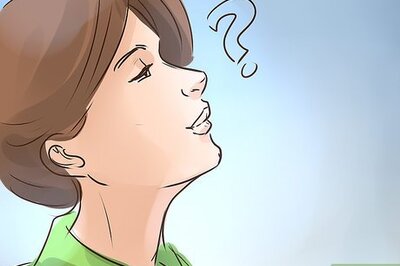








Comments
0 comment